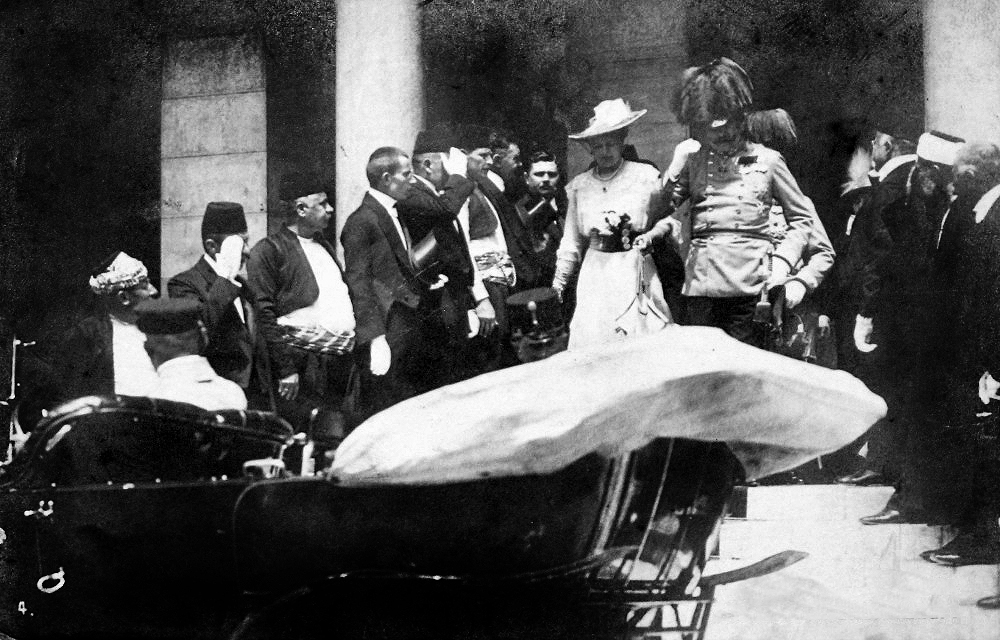
“For several months, the two opposing fleets would face off in a tense game of brinksmanship. The standoff became known as the Samoan Crisis.”
GERMANY WAS A LATE BLOOMER among Europe’s imperial powers.
After attaining nation-state status in 1870, Otto von Bismarck’s newly unified Germany made up for its relatively tardy arrival on the world stage by snatching up overseas colonies as quickly as it could.
In its relentless drive for what Kaiser Wilhelm II would later call Germany’s “place in the sun,” the burgeoning empire moved to secure territories throughout Africa, China, as well as the Marianas, New Guinea, and the Caroline Islands. But it was the pursuit of a foothold in the remote islands of Samoa that would nearly bring the country to blows with another relative newcomer to the world stage, the United States.
One of the more remote landfalls in the South Pacific, the pair of islands that make up Samoa share just over 2,000 sq. kms between them. Despite their small size and isolation, Samoa was not without its strategic value in the 19th Century. In an era of coal-powered steam ships, far-flung anchorages, even ones as tiny as Samoa, were vital ports-of-call for warships needing to refuel.
Recognizing this, Berlin looked for ways to bring the islands into its sphere of influence. Plus, commercial interests in Germany were keen to exploit the local coconut and cocoa bean trade there.

Germany Plays King-Maker
When war broke out between two primitive tribal factions on Samoa in the 1886, Germany saw its chance to play a little ‘divide and conquer.’
Berlin backed a Samoan rebel chief named Tamasese, providing not just weapons and money to his faction, but also military advisers. In exchange, the Kaiser sought trade and territorial concessions once the new monarch was installed.
By 1888, three German warships arrived in Samoa’s Apia Harbour and went so far as to openly lend a hand to Tamasese’s forces in this widening civil war against King Malietoa. The flotilla even put troops ashore to support the rebels. It was a provocation that did not go un-noticed in the United States. After all, the Americans were long-time trade partners of the ruling Malietoa and had no intention of being elbowed out of Samoa by a European power.

America Takes Notice
With U.S. commercial interests on Samoa suddenly at risk, Washington dispatched three warships of its own to the islands – the screw sloop USS Vandalia, the steamer USS Trenton and the USS Nipsic, a Civil War-era gunboat. Britain, who also had a stake in Samoa, sent HMS Calliope to monitor the situation.
For the next several months, the two opposing fleets would face off in a tense game of brinksmanship. The standoff became known as the Samoan Crisis. For many observers, including the famed Scottish novelist Robert Louis Stevenson who witnessed it first hand, all out war between Germany and the United States was in the offing.
Stevenson, the author of the classic Treasure Island, had become a resident of Samoa in the 1880s after making landfall there during a pleasure cruise across the Pacific. He even adopted a Samoan tribal name: Tusitala, which means “Teller of Tales.” The famed writer recorded details of the crisis in his book A Footnote to History: Eight Years of Trouble in Samoa.

Tensions ‘Blow Over’
As the weeks passed and the tribal war persisted in the Samoan jungles, the temperature between America and Germany continued to rise. While no shots had been fired between the two fleets, a confrontation seemed likely. Then nature intervened to settle the issue.
On March 16, 1889 a powerful typhoon struck the island. The force of the storm drove the British warship Calliope out to sea and destroyed both the German and American vessels as they tried to ride the tempest out in the harbour. Six ships in all were lost; more than 100 Germans and 53 American sailors were killed in the disaster. The survivors were taken off Samoa by trade vessels and later repatriated.
While the civil war continued, the immediate threat of a clash between Germany and the United States ended with the destruction of the two fleets.
Eventually, the Samoan question was resolved by the Tripartite Convention of 1899 in which one of the two Samoan islands was awarded to Germany, the other to the United States. The locals had no say in the decision.
New Zealand would end up seizing German Samoa in the opening days of the First World War. The island nation would not obtain independence until 1962. American Samoa remains a protectorate of the United States to this day.
(Originally published in MilitaryHistoryNow.com on Oct. 8, 2012)
SOURCES
http://suite101.com/article/samoan-crisis—western-powers-compete-for-pacific-islands-group-a225794
http://en.wikipedia.org/wiki/A_Footnote_to_History:_Eight_Years_of_Trouble_in_Samoa
http://en.wikipedia.org/wiki/Tripartite_Convention_(1899)
http://en.wikipedia.org/wiki/1889_Apia_cyclone












This was a very interesting and a key event in the Pacific that I was totally unaware of… and a typhoon is a repeat contributor to outcomes of the Pacific War, I feel. Thanks for posting.
The war that almost was. Interesting. Thanks!
Reblogged this on Stuff That Interests Me and commented:
NH Mallet has an interesting blog. I recommend it.
Very interesting! I do have a question: what was the name of the typhoon?